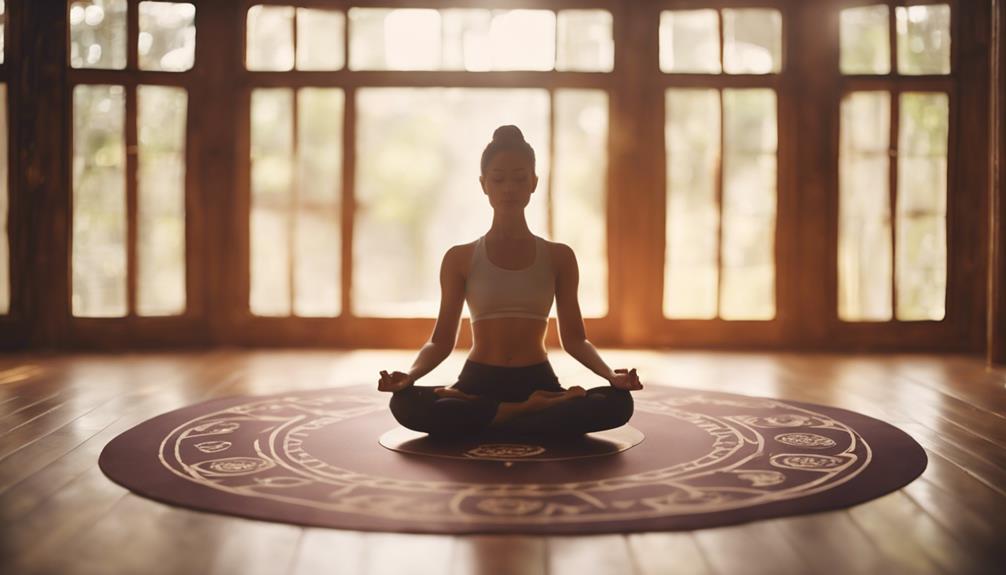Yoga is a holistic practice that encompasses physical postures, breath control, meditation, and ethical living. Among the myriad of postures, standing poses hold a special place. They are foundational to many yoga sequences and provide a robust way to build strength, flexibility, and balance. Standing poses engage multiple muscle groups and foster a deeper connection to one’s body and mind. This article will delve into the names and benefits of various standing poses, providing insight into how they can enhance your yoga practice.
For practitioners, whether beginners or advanced, understanding standing poses is crucial. They set the stage for more complex asanas, improve alignment, and cultivate focus and stability. The practice of standing poses enhances overall body awareness and can lead to greater physical and emotional resilience. This article aims to explore the significance of standing poses in yoga, emphasizing their alignment, transitions, and practical applications for daily practice.Yoga Joplin Mo
Importance of Proper Alignment in Standing Poses
Proper alignment is key to maximizing the benefits of standing poses and mitigating the risk of injury. Each pose is designed to cultivate balance and strength while promoting optimal functioning of the body’s systems. When aligned correctly, practitioners can engage the right muscles, maintain balance, and enhance the flow of energy throughout the body. This alignment also facilitates deeper breathing, which is essential for effective yoga practice.
Moreover, correct alignment helps practitioners develop a greater awareness of their bodies. Understanding how to align the spine, limbs, and core during standing poses leads to improved posture both on and off the mat. This awareness can extend beyond yoga, influencing daily activities and overall well-being. Consequently, taking the time to learn and refine alignment in standing poses is a worthwhile investment for any practitioner.
Common Yoga Standing Poses for Beginners Explained
There are several standing poses that are particularly accessible to beginners, each offering unique benefits. The most notable of these is Mountain Pose (Tadasana), which serves as the foundation for all standing poses. Practicing Mountain Pose encourages good posture, grounding, and a sense of balance, making it an essential starting point for beginners.
Warrior I (Virabhadrasana I) is another fundamental pose that builds strength in the legs and opens the hips and chest. This pose teaches practitioners to engage their core while developing focus and determination. Warrior II (Virabhadrasana II) further enhances these attributes by encouraging a wider stance and greater stability. Lastly, Forward Bend (Uttanasana) can be practiced standing, providing a simple way to stretch the hamstrings and release tension in the back. Together, these poses create a solid foundation for beginners to explore the world of standing poses in yoga.
Detailed Guide to the Warrior Poses in Yoga
The Warrior poses are among the most revered standing poses in yoga, embodying strength, courage, and stability. Warrior I (Virabhadrasana I) is performed by stepping one foot back while bending the front knee, arms reaching overhead. This pose emphasizes focus and grounding, as practitioners aim to feel rooted while extending upwards. It opens the chest and shoulders, providing a sense of empowerment.
Building upon Warrior I, Warrior II (Virabhadrasana II) invites practitioners to extend their arms parallel to the ground, creating a wide stance that embodies openness and strength. This pose enhances flexibility in the legs, opens the hips, and strengthens the core. Finally, Warrior III (Virabhadrasana III) challenges balance by involving a forward lean with one leg extended back. This pose cultivates core strength and concentration while encouraging a sense of grace and stability. Together, these three poses form a powerful trio that can invigorate any yoga practice.
Exploring the Tree Pose: Balance and Focus in Practice
Tree Pose (Vrksasana) is a quintessential balancing pose that encourages focus and stability. In this pose, practitioners shift their weight onto one leg while the other foot is pressed against the inner thigh or calf of the standing leg. The arms can be raised overhead or placed at the heart center, allowing for a range of variations based on individual comfort and balance.
Practicing Tree Pose cultivates not only physical balance but also mental clarity and concentration. The act of finding stability on one leg requires dedication and mindfulness, fostering a deeper connection to the present moment. As practitioners engage with this pose, they can enhance their proprioception—the awareness of body position—which is beneficial for both yoga and daily life.
Understanding the Triangle Pose and Its Variations
Triangle Pose (Trikonasana) is a standing pose renowned for its expansive nature and numerous benefits. To perform Triangle Pose, practitioners stand with their feet wide apart and reach one arm toward the ground while the other extends towards the sky, creating a triangle shape with the body. This pose stretches the legs, opens the hips, and enhances flexibility in the spine.
Triangle Pose also invites variations that cater to different levels of experience and flexibility. For instance, one can opt for a more supportive approach by using a yoga block to assist in reaching the ground with less strain. Additionally, practitioners can experiment with different arm positions—either stretching the top arm overhead or resting it on the hip—to find a variation that resonates with their body. The adaptability of Triangle Pose makes it a versatile addition to any yoga practice.
The Role of the Mountain Pose in Yoga Practice
Mountain Pose (Tadasana) is often considered the foundation of all standing poses. Although it appears deceptively simple, Mountain Pose is a powerful asana that promotes awareness and alignment. Practitioners stand tall with feet together or hip-width apart, grounding down through their feet while reaching upwards through the crown of the head. This creates a sense of balance and poise.
Mountain Pose is also crucial for cultivating overall body awareness. It encourages practitioners to engage their thighs, lengthen their spine, and relax their shoulders. This grounding pose sets the stage for transitions into more complex standing poses, as it reinforces the importance of alignment and stability. As a result, Mountain Pose serves not only as a standalone practice but also as a vital preparatory pose in various yoga sequences.
How to Transition Between Yoga Standing Poses Smoothly
Transitions between standing poses can significantly enhance the flow and rhythm of a yoga practice. To transition smoothly, practitioners should maintain awareness of their breath and focus on the alignment of their bodies. For instance, moving from Mountain Pose to Warrior I requires shifting weight and stepping back with one foot while maintaining core engagement. It’s crucial to move mindfully, allowing each pose to inform the next.
Practicing fluid transitions can create a sense of continuity and ease in the practice. For example, moving from Triangle Pose to Side Angle Pose can be achieved by bending the front knee and placing the forearm on the thigh while extending the opposite arm overhead. This seamless transition encourages a dynamic flow, allowing practitioners to experience the interconnectedness of poses and foster a greater sense of overall harmony in their practice.
Tips for Enhancing Stability in Standing Poses
Enhancing stability in standing poses is essential for cultivating confidence and strength. One effective tip is to engage the core muscles, which serve as the body’s foundation. By drawing the navel in and up, practitioners can create a solid base that supports balance and alignment in all standing poses. Practicing this engagement consistently will lead to improved stability and confidence over time.
Another key aspect of stability is to focus on the grounding of the feet. Distributing weight evenly across the soles of the feet while feeling the connection with the ground allows practitioners to create a more stable base. This can be further enhanced by consciously spreading the toes and rooting through the heels. Additionally, engaging the muscles of the legs and maintaining a slight bend in the knees can provide further support. Together, these techniques help practitioners achieve greater stability in standing poses.
Incorporating standing poses into your yoga routine offers a wealth of benefits, from improved balance and strength to enhanced body awareness and focus. By understanding the names and nuances of each standing pose, practitioners can deepen their practice and cultivate a more profound connection with their bodies. Emphasizing proper alignment, transitions, and stability is crucial for maximizing the effectiveness of these poses.
Whether you are a beginner or an experienced yogi, standing poses are foundational elements of a well-rounded practice. By integrating these poses mindfully and consistently, you can develop greater resilience, confidence, and body awareness, ultimately enriching your overall yoga experience. As you continue to explore the world of yoga, let standing poses guide you towards a balanced and harmonious practice.


